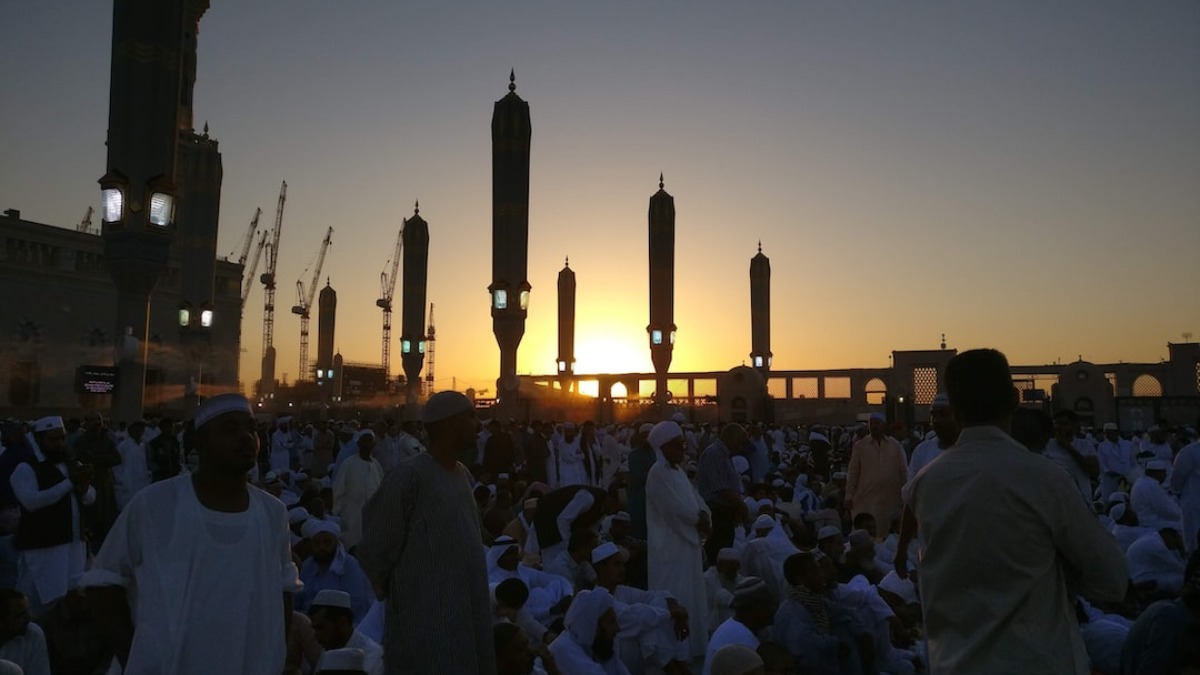Muslim Festivals
The Significance of Eid-ul-Adha for Muslims in the World

Eid-ul-Adha, also known as the Festival of Sacrifice, is one of the two most important holidays in Islam. It is a time for Muslims to celebrate the willingness of Prophet Ibrahim (Abraham) to sacrifice his son Ismail (Ishmael) as an act of obedience to God.
The holiday falls on the 10th day of Dhul Hijjah, the 12th month of the Islamic lunar calendar. It is a time for Muslims to gather with family and friends, to pray, to give charity, and to sacrifice animals.
The significance of Eid-ul-Adha is twofold. First, it commemorates the story of Prophet Ibrahim and Ismail. According to the Quran, Ibrahim was instructed by God to sacrifice his son Ismail. Ibrahim was willing to obey God, even though it meant sacrificing his own child. However, at the last moment, God provided a ram as a substitute sacrifice.
This story teaches Muslims about the importance of obedience to God, even when it is difficult. It also teaches Muslims about the importance of sacrifice. Muslims believe that Ibrahim’s willingness to sacrifice his son was a sign of his great faith and love for God.
The second significance of Eid-ul-Adha is that it marks the end of the Hajj pilgrimage. The Hajj is a religious obligation that all Muslims must undertake at least once in their lifetime, if they are physically and financially able. The Hajj is a journey to the holy city of Mecca, in Saudi Arabia.
Eid-ul-Adha is a time for Muslims to celebrate the completion of the Hajj. It is also a time for Muslims to reflect on the meaning of the Hajj and to renew their commitment to Islam.
Eid-ul-Adha is a joyous occasion for Muslims around the world. It is a time for celebration, feasting, and giving to charity. It is also a time for Muslims to reflect on the importance of obedience to God, sacrifice, and compassion.
Table of Contents
How is Eid-ul-Adha Celebrated?
Eid-ul-Adha is celebrated in a variety of ways around the world. However, there are some common practices that are observed by Muslims everywhere.
- Prayer: The first thing that Muslims do on Eid-ul-Adha is to offer special prayers. These prayers are usually held in mosques or open spaces.
- Sacrifice: One of the most important practices of Eid-ul-Adha is the sacrifice of an animal. This animal is usually a sheep, goat, cow, or camel. The meat from the sacrifice is then divided into three parts: one part is given to the poor, one part is given to relatives and friends, and one part is kept for the family.
- Visiting Family and Friends: Eid-ul-Adha is a time for Muslims to visit family and friends. They exchange gifts and greetings, and they enjoy a festive meal together.
- Eid Festivities: There are often Eid festivities held in public places, such as parks and community centers. These festivities may include games, rides, and cultural performances.
The Importance of Eid-ul-Adha
Eid-ul-Adha is an important holiday for Muslims for a number of reasons. First, it commemorates a significant event in Islamic history. Second, it marks the end of the Hajj pilgrimage. Third, it is a time for Muslims to come together and celebrate their faith.
Eid-ul-Adha is also a time for Muslims to reflect on the meaning of sacrifice. The sacrifice of an animal on Eid-ul-Adha is a reminder of the willingness of Prophet Ibrahim to sacrifice his son for God. This teaches Muslims about the importance of obedience to God, even when it is difficult.
Eid-ul-Adha is a time for Muslims to rejoice in their faith and to celebrate their community. It is a time for Muslims to come together and to reflect on the meaning of sacrifice.
Conclusion
Eid-ul-Adha is a significant religious holiday for Muslims around the world. It is a time for celebration, feasting, and giving to charity. It is also a time for Muslims to reflect on the importance of obedience to God, sacrifice, and compassion.
If you are interested in learning more about Eid-ul-Adha, I encourage you to do some research online or to speak with a Muslim friend or family member. I hope this article has given you a better understanding of the significance of this important holiday.
Discover more from The Monitor
Subscribe to get the latest posts sent to your email.
-

 Featured5 years ago
Featured5 years agoThe Right-Wing Politics in United States & The Capitol Hill Mayhem
-

 News4 years ago
News4 years agoPrioritizing health & education most effective way to improve socio-economic status: President
-

 China5 years ago
China5 years agoCoronavirus Pandemic and Global Response
-

 Canada5 years ago
Canada5 years agoSocio-Economic Implications of Canadian Border Closure With U.S
-

 Conflict5 years ago
Conflict5 years agoKashmir Lockdown, UNGA & Thereafter
-

 Democracy4 years ago
Democracy4 years agoMissing You! SPSC
-

 Democracy4 years ago
Democracy4 years agoPresident Dr Arif Alvi Confers Civil Awards on Independence Day
-

 Digital5 years ago
Digital5 years agoPakistan Moves Closer to Train One Million Youth with Digital Skills




















